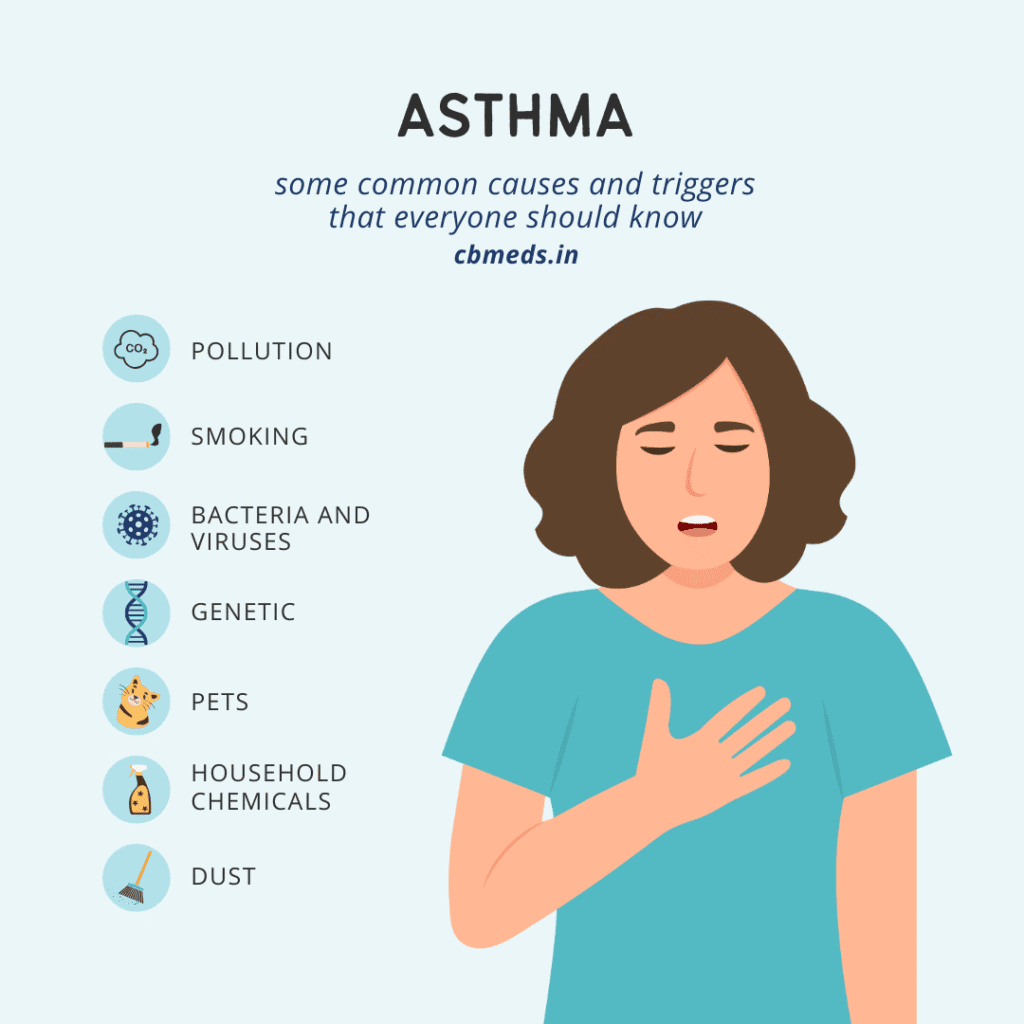
Asthma is a chronic respiratory condition that affects millions of people worldwide, making breathing difficult and often leading to coughing, wheezing, and shortness of breath. While asthma can be managed with the right treatment and care, understanding its triggers is the first crucial step toward preventing severe flare-ups.
In this post, we’ll explore some of the most common causes and triggers of asthma—many of which are part of our everyday environment.
1. Pollution
Air pollution is one of the leading environmental triggers of asthma. Vehicle emissions, industrial smoke, and even indoor pollutants like cooking fumes can irritate the lungs and lead to asthma attacks. If you live in a highly polluted area, consider using air purifiers at home and wearing a mask outdoors when pollution levels are high.
2. Smoking
Cigarette smoke, both active and passive (secondhand smoke), is a major asthma trigger. It damages the airways, increases inflammation, and reduces lung function over time. Quitting smoking and avoiding smoky environments can greatly reduce the risk of asthma-related complications.
3. Bacteria and Viruses
Respiratory infections caused by bacteria and viruses, such as the common cold or flu, can trigger asthma symptoms or make them worse. Regular hand washing, maintaining a healthy immune system, and getting vaccinated can help protect against these infections.
4. Genetics
Asthma often runs in families. If you have a family history of asthma or allergies, you may be more likely to develop the condition. While you can’t change your genes, being aware of this risk can help you take early preventive measures.
5. Pets
Pet dander, fur, and saliva can act as allergens that trigger asthma, especially in people with pet allergies. If you’re sensitive to animals, try to limit contact, keep pets out of the bedroom, and clean regularly to reduce allergens.
6. Household Chemicals
Many everyday cleaning products, air fresheners, and paints release strong fumes or volatile organic compounds (VOCs) that can irritate the lungs. Switching to natural or fragrance-free products and ventilating your home during use can help.
7. Dust
Dust mites are tiny creatures found in household dust that can provoke asthma symptoms. Regular cleaning, using dust-proof covers for pillows and mattresses, and maintaining low humidity levels can help keep dust mites at bay.
Final Thoughts
Asthma may not have a cure, but with awareness and lifestyle adjustments, it is possible to live a healthy, active life. Recognising and avoiding triggers is key to managing asthma effectively.
If you or a loved one has asthma, consult with a healthcare provider for a personalised asthma action plan. For more health tips and trusted medical advice, visit cbmeds.in.
Stay informed. Breathe easy.
#AsthmaAwareness #LungHealth #BreatheEasy #cbmeds #HealthyLiving
